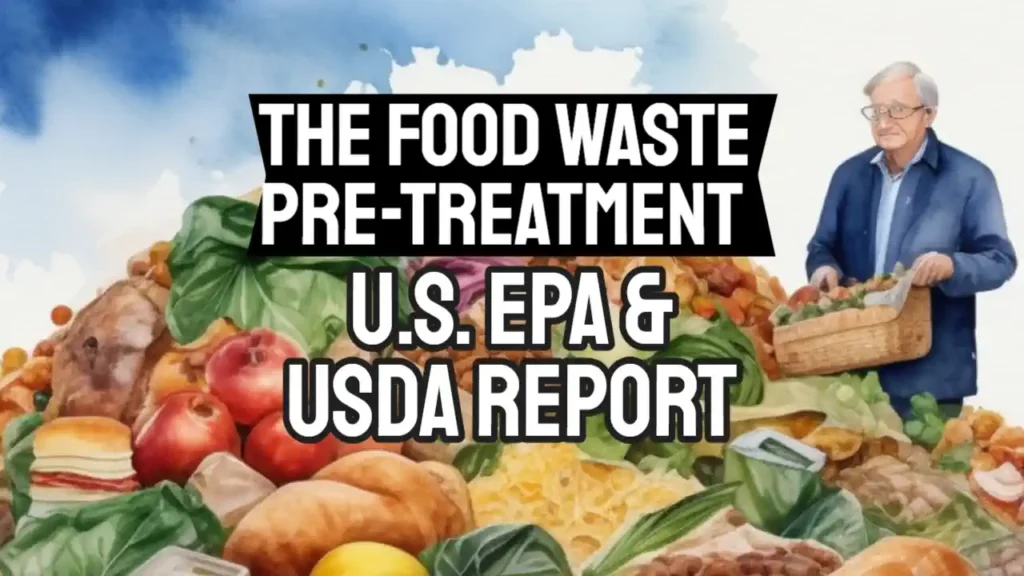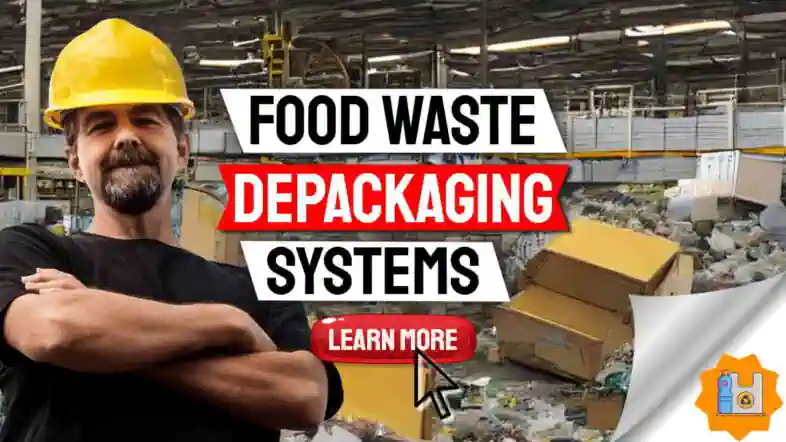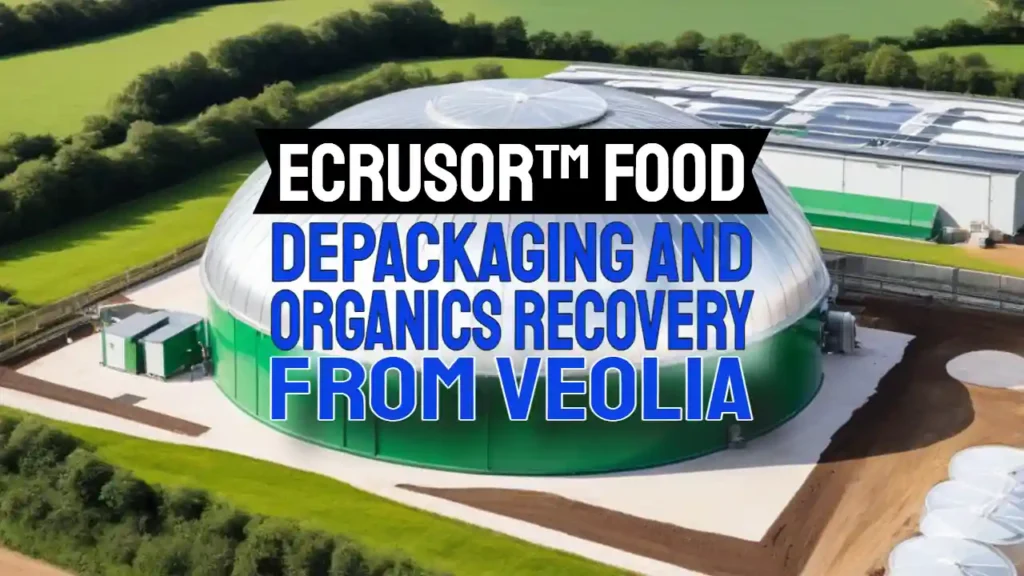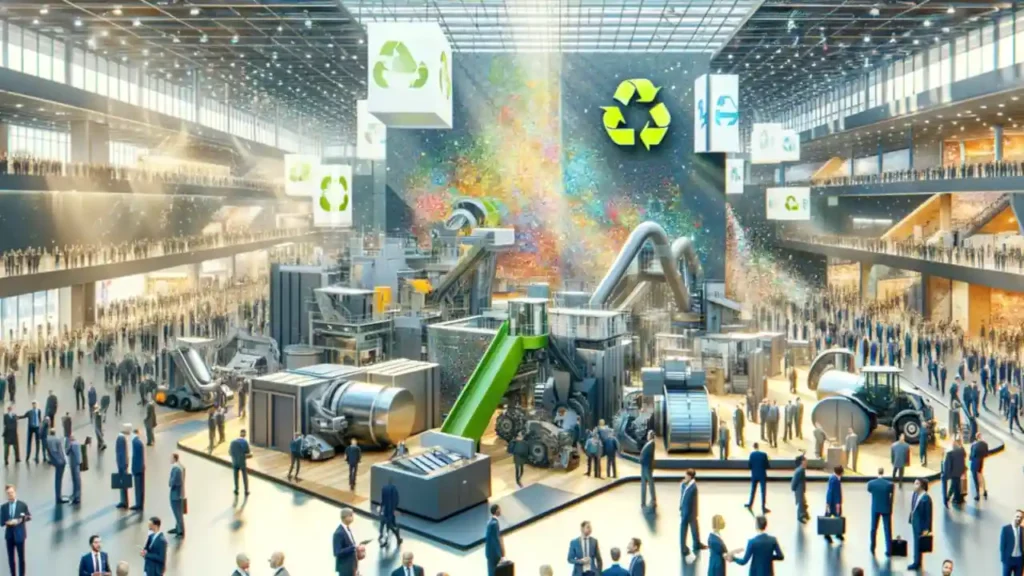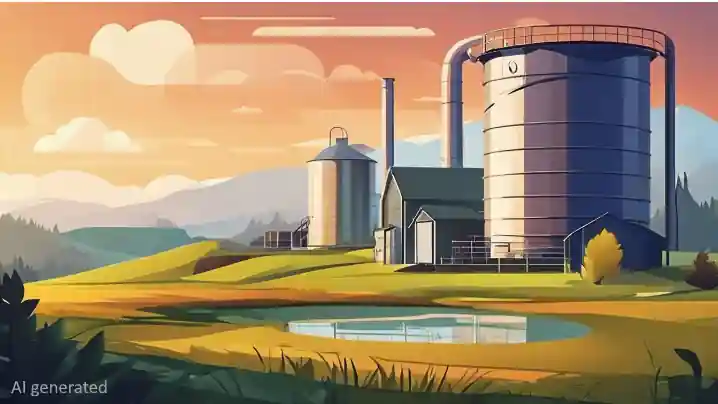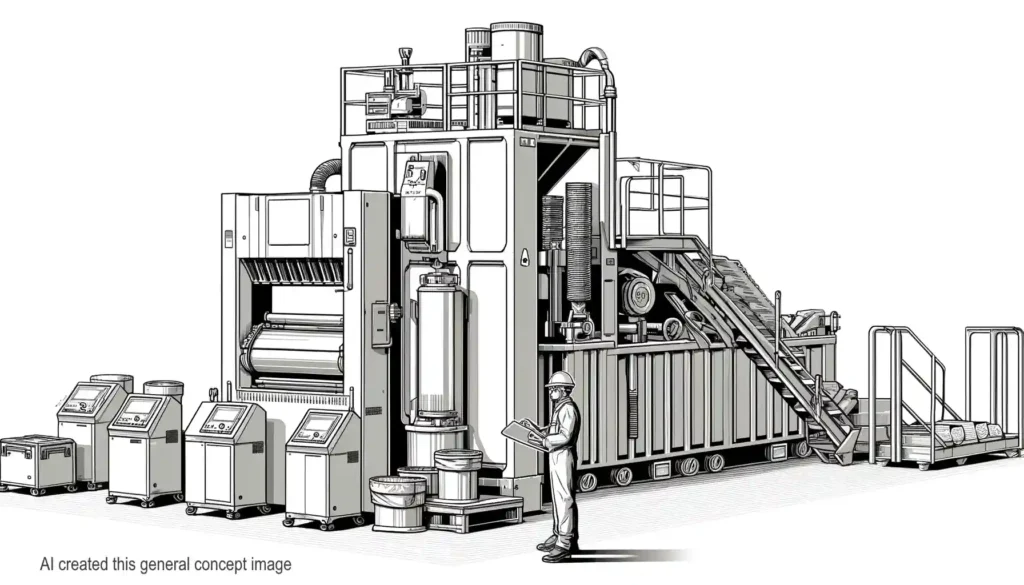Read on for our guide to the U.S. EPA and U.S. Department of Agriculture report on food waste pre-treatment (published in 2021).

The nation is struggling with the enormous amount of food waste it produces. It is a big problem for the planet. In 2021, the U.S. EPA and the Department of Agriculture published a report (Titled: Emerging Issues in Food Waste Management Commercial Pre-Processing Technologies) and explained how it aimed to cut this issue in half by 2030.
This article explains that report and how new tech can help us get there, making it easier for everyone to do their part.
Read on and see how!
Key Takeaways
- The U.S. EPA and the Department of Agriculture aim to cut food waste in half by 2030, with some states already banning it from landfills.
- New technologies like grinding machines, bio-digestion systems, and pulping machines help manage food waste on-site before disposal.
- Turning food waste into energy through anaerobic digestion is a key strategy for reducing methane emissions from rotting organic matter.
- Challenges include dealing with the environmental impact of sewer discharge from pre-treated food waste and finding efficient ways to handle liquid and semi-dry/dry by-products.
- Research is needed to explore the best methods for biogas generation from different pre – treatment technologies to support sustainable waste management practices.
Ambition to Reduce U. S. Food Waste by 2030

The goal is to halve food waste by 2030. The plan also includes banning food waste in landfills.
Target to Cut Food Waste in Half
Cutting food waste in half by 2030 is a bold aim of the U.S. Food Loss and Waste Reduction Goal. This effort calls for immediate action from everyone involved – from farmers to food retailers, right down to us in our homes.
States like California and New York City are leading the way with new rules that stop so much food from ending up in landfills. These places show us it can be done.
I’ve seen firsthand how businesses change when they start focusing on this goal. They sort out their leftover food, finding ways to give away or recycle what they can’t sell. Techniques like aerobic digestion turn scraps into compost, helping grow more food without waste.
Anaerobic digestion even turns some of this waste into methane for energy, cutting greenhouse gases.
Every piece of wasted food is a chance missed to feed someone hungry or save our planet.
Prohibitions on Food Waste in Landfills
Some states and cities are saying no to dumping food waste in landfills. Places like California, Massachusetts, Vermont, Austin, Boulder, and New York City have made rules against it.
They want less food waste buried in the ground because it makes methane gas. Methane is bad for our air because it traps heat.
These places also start new recycling programmes to keep food waste out of dumps and incinerators. They turn the waste into something useful instead of letting it rot away. This change helps us cut down on harmful gases that warm up our planet.
It’s a big step towards making less trash and saving our environment from damage.
Advancements in On-Site Food Waste Pre-Treatment Methods
Businesses and institutions across the US nation are adopting on-site food waste pre-treatment methods. These methods are impacting recycling practices and the environment.
Adoption by Businesses and Institutions
Many companies and schools are now putting food waste pre-treatment systems in place. They want to follow new rules and meet their own goals for saving money and the environment. These pre-treatment setups can grind, digest, pulp, dehydrate or compost food waste right on site.
This means they can handle their food waste better before it even leaves their property.
I’ve seen these systems at work in a local school. They used a bio-digestion system to turn lunch leftovers into liquid that goes straight into the sewer system. This was not only smart but also very effective in reducing the amount of trash they needed to deal with.
It’s clear that using technology like this makes a big difference in cutting down on food waste and helping our planet.
Effect on Recycling Practices and Environmental Impact
On-site food waste pre-treatment changes how we handle leftovers. It turns scraps into resources, like water and compost, instead of sending them to landfill sites. This method reduces the amount of rubbish that piles up and cuts down on harmful gases, like methane, from rotting food.
Pre-treatment technologies transform what we view as waste into valuable products.
This approach helps recycling efforts by sorting organic matter from other rubbish. Cleaner recycling streams mean more materials can get recycled properly. Using bio-digestion systems or pulping machines lowers the strain on our planet by minimising landfill use and promoting renewable energy sources through biogas production.
Types of Food Waste Pre-Treatment Technologies
There are various pre-treatment technologies for food waste, including grinding machines and bio-digestion systems. These methods help to break down the waste into manageable by-products.
Grinding Machines
Grinding machines play a key role in food waste pre-treatment, cutting down the volume and changing the state of organic refuse. These devices help break down big chunks of kitchen leftovers into smaller bits or even liquid form.
This process is vital for preparing the scraps for further steps like anaerobic digestion, which turns waste into biogas, a renewable energy source. I worked with these machines and saw first-hand how they reduce hauling-related fuel usage and greenhouse gas emissions by creating dryer outputs.
Efficiency jumps when businesses opt to collect the liquid by-products from grinding operations for off-site biogas recovery through anaerobic digesters. Despite uncertainties about their environmental benefits compared to direct hauling of unprocessed waste, grinders stand out for their potential in methane production reduction and energy recovery.
They offer a practical alternative to managing food leftovers sustainably while contributing to the ambitious goal of slashing U.S. food waste by 2030.
Moving on, let’s explore bio-digestion systems…
Bio-Digestion Systems
Bio-digestion systems turn food waste into something useful. These machines use microorganisms to break down organic matter, creating biogas and liquid by-products. Many businesses and institutions install bio-digesters not just because they have to, but because it makes economic and environmental sense.
They find these systems a smart way to handle waste while aiming for greener goals.
From my experience working with these systems, I’ve seen firsthand how the liquid output can be managed. Some places send this liquid straight to sewers, which is common in the U.S., but others collect it for further processing at facilities specialising in biogas recovery.
This step turns waste into energy like electricity or biomethane, showing just how versatile and beneficial bio-digestion can be for our planet.
Pulping Machines
Shifting focus from bio-digestion systems, pulping machines introduce a different method of managing food waste. These devices work by removing water from food scraps, transforming them into a more manageable form for disposal or further processing.
This action not only reduces the volume of waste but also its weight, making it easier and cheaper to handle in the long term.
From my own experience working with these systems, I’ve noted their effectiveness in settings like large kitchens and food processing plants where reducing waste volume at the source can lead to significant savings.
Yet, this technology is not without its challenges. Concerns have arisen about the net environmental burden of sending pre-treated food waste down the sewer – an issue that needs more research to fully understand its impact on our water treatment infrastructure and municipal budgets.
Pulping machines could change how we manage organic residues by drastically cutting down their size and weight.
Dehydration Units
Dehydration units are a vital part of food waste pre-processing technologies and yield semi-dry or dry outputs. These outputs can be converted into stable soil amendments, reducing the need for hauling and cutting down on greenhouse gas emissions.
However, as dehydration units remove water from food waste, it may raise concerns about environmental impacts that need careful consideration.
The U.S. EPA has not conclusively determined whether the environmental benefits of processing commercial food waste using dehydration units surpass the direct hauling of unprocessed waste to its intended destination.
Aerobic In-Vessel Composters
Transitioning from dehydration units to aerobic in-vessel composters, these systems provide a means to effectively process food waste. They generate semi-dry or dry outputs that necessitate thoughtful consideration before further processing or disposal.
It’s vital for stakeholders to assess the net environmental impact of discharging into sewer systems and the potential effects on water treatment infrastructure. Additionally, robust research is imperative to ascertain whether using aerobic in-vessel composters for pre-processing commercial food waste outweighs hauling unprocessed waste directly.
These composters not only offer stable soil amendments from pre-processed food waste but also raise questions regarding their overall environmental benefits compared to direct waste disposal.
Handling Outputs from Pre-Treatment Systems
Pre-treatment systems produce liquid and semi-dry/dry by-products… These require appropriate handling to avoid environmental impact.
Liquid By-Products
Pre-treatment processes produce liquid by-products such as leachate, which is commonly discharged into municipal sewage systems in the UK. However, this shift to sewer discharge raises concerns about additional treatment costs and operational issues for water treatment systems.
Hence, it’s crucial for generators to carefully consider the impact on both water treatment infrastructure and associated charges when managing these liquid outputs.
Moreover, further research is required to comprehend how sewer discharge affects municipal ratepayers and water treatment facilities. This will aid in making informed decisions regarding the management of liquid by-products from food waste pre-treatment, ensuring minimal environmental implications while maximising resource recovery.
Entities: leachate, municipal sewage systems
Semi-Dry and Dry By-Products
Handling semi-dry and dry outputs from food waste pre-treatment systems is crucial for sustainable management. Technologies creating these outputs need careful consideration for further processing or disposal.
Dehydrators and aerobic in-vessel units can produce stable soil amendments, reducing hauling-related fuel use and greenhouse gas emissions. Additionally, pulpers and dehydrators remove water from food waste but may raise environmental concerns.
More research is needed to understand the net environmental burden of sewer discharge and its impact on water treatment systems.
Dry outputs have benefits such as reduced fuel use and emissions, but they also pose challenges that warrant further investigation. The proper handling of semi-dry and dry by-products from food waste pre-treatment technologies has far-reaching implications for achieving sustainable waste management practices while ensuring minimal environmental impact.
Environmental Implications and Obstacles
Handling outputs from pre-treatment systems can pose challenges in transitioning to sewage systems and may impact water treatment infrastructure. Alternatives for processing and disposing of pre-treated food waste include anaerobic digestion for biogas production and transportation to external processing facilities.
Transition to Sewage Systems from Landfills
As food waste management shifts from landfills to municipal sewage systems, challenges arise. Additional organic-loading-based treatment charges and operational problems may impact water treatment systems.
Liquid outputs from grinders and biodigesters can be hauled off-site for biogas recovery via AD at standalone facilities or at WRRFs. However, the net environmental burden of sewer discharge on water treatment systems and ratepayers’ potential impacts requires further research.
Fugitive methane emissions measurement is necessary along with studying the environmental and economic effects on municipal sewer systems and WRRFS due to increased liquefied food waste disposal down the drain.
Entities:
– Municipal Sewage Systems
– Food Waste Management
Consequences for Water Treatment Infrastructure
Shifting food waste management to municipal sewage systems and WRRFs could lead to additional charges and operational issues for water treatment systems. Research is needed to understand the environmental burden of sewer discharge and its impact on water treatment and ratepayers.
Fugitive methane emissions from sewer conveyance of food waste require measurement, along with studying the effects of liquefied food waste on municipal sewer systems and WRRFS. This has significant implications for our local environment….
Alternatives for Processing and Disposing of Pre-Treated Food Waste
Different alternatives exist for processing and disposing of pre-treated food waste. These include utilising anaerobic digestion to produce biogas and transporting the waste to external processing facilities for further treatment.
Anaerobic Digestion for Biogas Production
Anaerobic digestion is a process that breaks down organic waste to produce biogas, a renewable energy source. This method offers an effective solution for handling food waste and can contribute to achieving the U.S.’s target of cutting food waste in half by 2030.
The biogas produced from anaerobic digestion has the potential to be harnessed as a sustainable source of electricity, which aligns with the ambition to reduce methane emissions that would otherwise occur if food waste ends up in landfills.
Research gaps that need urgent attention include independently verified performance data for pre-processing technologies along with comparing the biogas potential of food waste pre-processed by different methods.
Concepts: Anaerobic Digestion, Biogas Production
Transportation to External Processing Facilities
After food waste is pre-treated on-site, generators must determine the best way to transport the outputs to external facilities for further processing. Liquid outputs from grinders or biodigesters can be collected and taken off-site for biogas recovery.
Technologies that produce semi-dry or dry outputs require generators to decide where to send the outputs for additional processing or disposal, which can include landfills or incinerators.
Dry outputs offer a reduction in fuel use and greenhouse gas emissions related to transportation.
Identifying Research Priorities and Shortfalls
Identifying research priorities and shortfalls is crucial to driving progress in food waste pre-treatment. It unravels opportunities for refining anaerobic digestion techniques and pinpointing areas where advancements are most needed.
Environmental Cost of Sewer Discharge
The transition of food waste management from landfills to municipal sewage systems and wastewater resource recovery facilities comes with further organic-loading-based treatment charges and operational challenges for water treatment systems.
Research gaps include understanding the net environmental burden of sewer discharge, the impact on water treatment systems, methane emissions from sewer conveyance of food waste, and comparative analysis of biogas potential produced by different pre-processing technologies.
It remains vital to gather independently verified operating and performance data for pre-processing technologies while measuring fugitive methane emissions from sewer conveyance.
Efforts are needed to comprehensively understand the implications of shifting food waste management practices towards sewage systems and addressing potential environmental burdens caused by such changes.
Methane Emissions not Captured
The environmental impact of food waste pre-treatment technologies needs a closer look to understand the methane emissions that might slip through the cracks. It is crucial to measure and analyse these fugitive methane emissions from sewer conveyance, as they could have significant implications for overall emission levels and environmental sustainability.
Additionally, a comparative analysis of biogas potential from food waste pre-processed by different technologies can shed light on which methods are most effective in capturing methane emissions.
Understanding and addressing the issue of uncaptured methane emissions is pivotal in refining food waste pre-treatment processes. Highlighting this often-overlooked aspect can guide future research efforts towards more effective and environmentally sustainable solutions.
Comparison of Biogas Generation Capabilities
Exploring how different food waste pre-processing technologies stack up in their ability to produce biogas is crucial. We’ve seen a surge in interest from environmental researchers, waste management professionals, and government officials in this area. Let’s delve into the details with a simplified comparison table that sheds light on the potential of each technology.
| Technology | Type of Output | Biogas Generation Potential |
|---|---|---|
| Grinders | Liquid | None |
| Bio-digesters | Liquid | High |
| Pulpers | A “pulp” – like a thick soup | High – when pulp output goes straight to a biogas digester plant |
| Dehydrators | Dry | None |
| Aerobic In-Vessel Units | Dry | None |
This table makes it clear that bio-digesters lead the pack in terms of biogas production potential, with their liquid outputs being prime for conversion into energy. Grinders and dehydrators follow, offering a decent return in terms of biogas. However, pulp machines and aerobic in-vessel composters, while useful for reducing waste volume, lag behind in biogas generation capabilities.
Bio-digesters, particularly, stand out for their efficiency. They break down organic material in the absence of oxygen, producing methane-rich biogas. This gas can then be used as a renewable energy source, showing a strong potential for both waste reduction and energy production.
Our exploration shows how critical the choice of technology is for those aiming to make the most of food waste as a resource. It’s about finding a balance between reducing waste volume and harnessing its energy potential. This insight is vital for decision-makers in the field of waste management, pushing for a more sustainable and energy-efficient approach in dealing with food waste.
Conclusion
In summary, the U.S. EPA and U.S. Department of Agriculture are driving significant initiatives to slash food waste by 2030. Various methodologies for on-site food waste pre-treatment are being adopted, offering practical solutions to address environmental impact and recycling practices in businesses and institutions.
The range of technologies such as grinding machines, bio-digestion systems, pulping machines, dehydration units, and aerobic in-vessel composters provide diverse options for handling food waste output.
Transitioning from landfills to municipal sewage systems presents challenges but also opens opportunities for biogas generation and resource recovery facilities. Research gaps need addressing to enhance the efficiency of these processes further.
Therefore, implementing effective strategies for food waste pre-treatment is crucial for achieving the ambitious goal set by government agencies while addressing environmental concerns with practical solutions that promise tangible improvements in resource management.
We encourage further exploration of this area through additional resources provided in the EPA’s report as taking proactive steps toward revolutionising your approach could lead to transformative outcomes.”
In conclusion, embracing innovative methods can pave the way towards a more sustainable future with a reduction in food wastage.”
FAQs
1. What is anaerobic digestion and how does it help in food waste treatment?
Anaerobic digestion, or AD for short, turns food wastes into energy. It’s a process where microbes break down biowastes without oxygen, making methane-rich biogas. This gas can be used to generate electricity or even produce bio-methane for heating and transport.
2. Why is pre-treatment important in the anaerobic digestion process?
Pre-treatment of food waste makes the anaerobic digestion process faster and more efficient. Through mechanical or biological methods like adding certain fungi or breaking down large molecules, we make it easier for microbes to do their job. This means more energy from less waste!
3. Can all types of food waste be treated in an anaerobic digester?
Mostly, yes! Anaerobic digesters love organic materials like leftover veggies, fruits, and even manures. However, they’re not too keen on plastics or metals – so keep those out.
4. How does turning food waste into energy benefit the environment?
By treating food wastes with AD technology, we cut down on landfilling which releases harmful CO2 and methane into our atmosphere when organic matter breaks down uncontrolledly. Plus, generating renewable electricity from this method helps reduce our reliance on fossil fuels. It’s a win-win situation!
5. What role do black soldier fly larvae play in managing food waste?
These little critters are amazing at eating away almost any type of organic waste! By feeding them our leftovers, they grow fast, converting wastes into high-quality protein that can be used as animal feed. Not only does this reduce the amount of garbage going to landfills, but it also provides a sustainable source of feed.
6. Are there any new technologies being explored for improving the efficiency of biogas plants?
Yes indeed! Scientists are constantly looking for ways to get better results from biogas plants. From experimenting with different types of methanogens that produce methane during AD to using PEM electrolysis for hydrogen production; there’s always something brewing in the lab! These innovations could make producing clean energy from waste even more effective than before.
Discover more from IPPTS Depackaging Equipment Insights
Subscribe to get the latest posts sent to your email.

